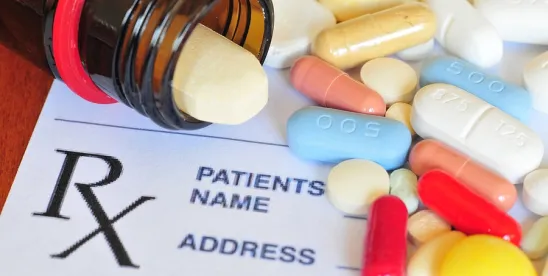Picking up from my last installment of this series exploring the regulatory history of off-label communication, this post highlights some recent trends in FDA enforcement and guidance related to off-label promotion. Not surprisingly, FDA has taken a hard-line approach in its guidance on off-label communications, similar to the Agency’s forceful January 2017 memo. This aggressive stance has not, however, translated into increased enforcement.
Recent Off-Label Enforcement Trends
In large part, FDA’s Office of Prescription Drug Promotion (“OPDP”) handles violations involving promotional content in drug labeling, including promotional material presented on television, print media, the internet, and at trade shows and conferences. Given this responsibility, OPDP is the FDA division most likely to identify instances of off-label promotion by manufacturers and initiate enforcement action by sending a Warning Letter or Untitled Letter.
Considering FDA’s rejection of all alternative approaches to off-label communications recommended by the U.S. Court of Appeals for the Second Circuit in Caronia and during the November 2016 public meeting, one would expect active, strict enforcement of FDA’s off-label communication standards. However, the reality is that OPDP has shown a significant decline in enforcement activity in recent years. In 2010, OPDP issued 52 Warning and Untitled Letters, but by 2013, that number declined to 24 enforcement letters; less than half the number sent in 2010. In 2015 and 2016, OPDP issued 9 and 11 enforcement letters, respectively, and so far in 2017, OPDP has issued only 1 Untitled Letter. Enforcement related to off-label promotion is also low, as evidenced by OPDP issuing only 3 Untitled Letters citing manufacturer promotional materials containing information on new uses for which the drug lacks FDA approval.
In 2015, and in the midst of the Amarin case, FDA was forced to withdraw a Warning Letter as part of a settlement with the drug manufacturer Pacira. In September 2014, OPDP issued a Warning Letter which stated that Pacira was marketing its postsurgical pain medication off-label and cited medical journal ads and administration guides. The promotional materials stated that the drug could be used for pain relief after two specific types of surgery, uses which were not explicitly approved by FDA, even though FDA had approved an indication for the drug which encompassed broader postsurgical uses. Pacira filed a lawsuit against FDA claiming that the enforcement action violated the company’s First Amendment rights, and obtained a settlement agreement in which FDA rescinded the Warning Letter and approved a labeling supplement which clarified the drug’s prescribing information.
In light of the Pacira settlement, it appears that FDA now finds itself in a catch 22: the Agency wants to strengthen its aggressive policy to limit off-label communications by manufacturers, but it cannot effectively enforce that policy because manufacturers are finding support for their First Amendment defense in federal courts.
FDA’s Recent Guidance Related to Off-Label Communications
When it comes to guidance on prescription drug promotional materials, FDA staunchly holds to its three core tenets developed decades ago: promotional materials must (1) be accurate and not misleading, (2) contain a fair balance of benefit and risk information, and (3) be adequately substantiated by supporting scientific data. In general, all FDA guidance on promotional activities is based on these core standards. However, even when a manufacturer can meet all of these standards by limiting off-label communications to those that are accurate with respect to completed scientific studies and that present the balance of benefits and risks, FDA still rejects such communications as illicit in a promotional context. According to FDA’s January memo, the Agency’s position appears to be that it is the only arbiter of scientific validity and objectivity and that no promotional material may be considered accurate and non-misleading unless it passes official FDA scrutiny.
Recent FDA guidance documents bear out its hard-line approach to off-label communications. In the draft guidance Medical Product Communications That Are Consistent With the FDA-Required Labeling — Questions and Answers released in January 2017, FDA sets out its position on medical product promotions that will not lead to enforcement action. Essentially, the guidance reinforces FDA’s traditional stance on promotional materials and gives examples of communications that are not consistent with FDA-required labeling, including the following types of information:
- Use of a product to treat or diagnose a different disease or condition that the product is approved/cleared to treat or diagnose;
- Use of a product to treat or diagnose patients who are not in the approved/cleared patient population;
- Use of product to treat a different, stage, severity, or manifestation of a disease than the product is approved/cleared to treat;
- Use of a product as monotherapy when it is only approved/cleared for use in conjunction with one or more therapies;
- Using a product through a different route of administration;
- Use of a different strength, dosage, or use regimen than the approved/cleared strength, dosage, or use regimen; and
- Use of a product in a different dosage form than the one described in FDA-required labeling.
These examples effectively encompass the major categories of potential off-label use and demonstrate FDA’s intent to initiate enforcement action against manufacturers that engage in off-label communications about medical products, regardless of the supporting data available.




 />i
/>i
